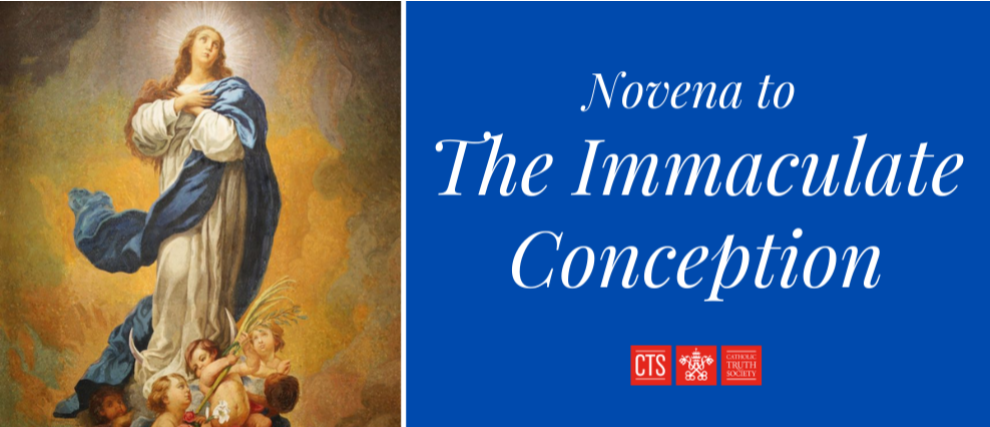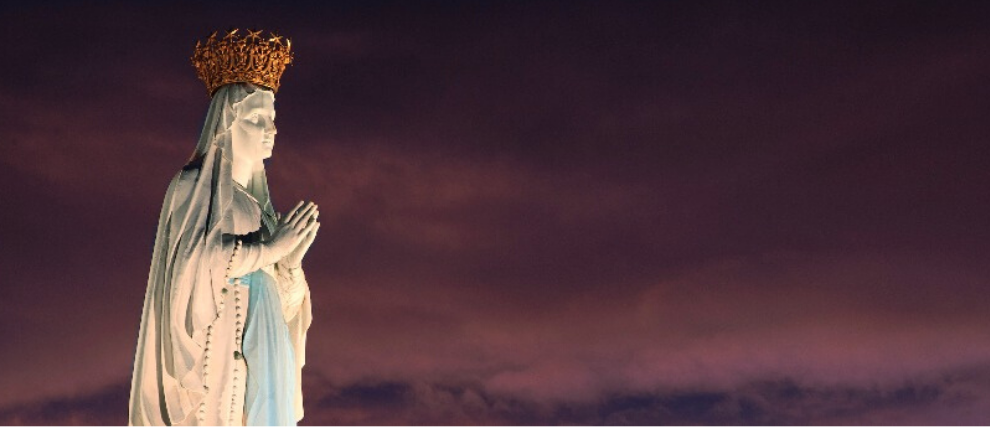Immaculate Conception: Origin and Meaning, Celebration, Devotion, Prayers
On December 8, the Catholic Church invites us to celebrate the Solemnity of the Immaculate Conception, which is a great Marian feast, but also a dogma of faith promulgated by Pope Pius IX in 1854.
What is Immaculate Conception? How is the Immaculate Virgin celebrated on December 8? What devotion does the Church have to Mary, Mother of God, conceived without sin? In this article, discover the origin and meaning of this great Marian feast! Enter into the mystery of the Immaculate Conception of the Virgin Mary
Immaculate Conception: Origin and Meaning
Origin of the Feast of the Immaculate Conception
The first celebrations of Mary's conception date back to the 8th century in the East, and then in the West from the 11th century onwards, under the influence of the Franciscans.
Although the belief in the Immaculate Conception had been widely controversial for centuries, the feast of the conception of Mary gradually spread in the Church, especially under the influence of two popes. In 1477, Pope Sixtus IV authorized a mass for the feast of the Immaculate Conception, then Clement XI officially instituted the feast in 1708. It then spread to the West.
In 1830, the Virgin Mary appeared to Catherine Labouré in Paris. A medal was then struck, including the following invocation “O Mary, conceived without sin, pray for us who have recourse to you.” Faith in the Immaculate Conception spread, until the proclamation of the dogma a few years later.
Each year, since 1852, the Immaculate Conception of the Virgin Mary is also fervently honored at the festival of lights in Lyon, France.
The Dogma of the Immaculate Conception
On December 8, 1854, Pope Pius IX solemnly proclaimed the dogma of the Immaculate Conception, defining it as follows: "The Blessed Virgin Mary was, at the first moment of her conception, by a singular grace and favor of Almighty God, in view of the merits of Jesus Christ, savior of the human race, preserved intact from all stain of original sin."
This Marian dogma thus establishes a truth of faith for all Catholics: Mary was conceived pure, without sin. This profession of faith is part of the four dogmas concerning the Virgin Mary: the dogma of "Mary Mother of God" proclaimed by the Council of Ephesus in 431; the dogma of the virginity of Mary defined by the Council of Lateran in 649; and finally the dogma of the Assumption proclaimed in 1950.
In 1858, four years after the proclamation of the dogma of the Immaculate Conception, the Virgin Mary appeared in Lourdes by introducing herself to the young Bernadette Soubirous as follows: “I am the Immaculate Conception.”
Celebrating the Feast of the Immaculate Conception
Solemnity of the Immaculate Conception
The feast of the Immaculate Conception of the Virgin Mary is celebrated by the Catholic Church on December 8, at the very beginning of the new liturgical year. This feast takes place nine months before the feast of the nativity of Mary, on September 8. Placed at the very beginning of Advent, this feast announces the coming of the Savior, because Mary, through her Immaculate Conception, was chosen to become the mother of God!
Established as a solemnity, the feast of December 8 is one of the most important liturgical celebrations, and consists of a specific liturgy.
Liturgy of December 8
During the Mass of December 8, we are led to read texts of great beauty:
- In the first reading, the text of Genesis announces the victory of the Virgin Mary over Satan: “And I will put enmity between you and the woman, and between your offspring and hers; he will crush your head, and you will strike his heel.” (Genesis 3:9-15)
- In the second reading, we read the letter to the Ephesians, which announces God's plan for humanity: “For he chose us in him before the creation of the world to be holy and blameless in his sight. In love.” (Ephesians 1:4)
- The Gospel repeats the text of the Annunciation, during which the angel calls Mary to become the mother of Christ: “Do not be afraid, Mary; you have found favor with God. You will conceive and give birth to a son, and you are to call him Jesus.” (Luke 1:26-27)
Devotion to Mary, Immaculate Virgin
The Mystery of the Immaculate Conception of the Virgin Mary
The feast of the Immaculate Conception calls us to contemplate the person of Mary, the immaculate virgin chosen by God to be the mother of Christ.
Indeed, Mary, although having been conceived from the union of a man and a woman, was marked by grace—that is to say, the free gift of God—because she was called to become the mother of the son of God. She is redeemed from sin “in consideration of the merits of her son.” (Lumen Gentium 53). Her spotless soul does not know the separation from God, caused by sin. On the contrary, it is totally in God, “full of grace,” as we proclaim in the prayer “Hail Mary.”
During his homily of December 8, 2004, John Paul II leads us into this great mystery: “Mary, the new Eve, has benefited in a special way from the work of Christ as the most perfect Mediator and Redeemer. Redeemed first by her Son, participating in fullness in her holiness, she is already what the whole Church desires and hopes to be. That is why the Immaculate, who marks the beginning of the Church, bride of Christ without spot or wrinkle, resplendent in beauty, always precedes the people of God in the pilgrimage of faith to the Kingdom of heaven.”
Prayer to the Immaculate Heart of Mary
“Immaculate Heart of Mary, full of love for God and full of compassion for sinners, I dedicate myself entirely to you. I entrust to you the salvation of my soul. May my heart always be united with yours, so that I can hate sin, remain in the love of God and my neighbor, in order to reach eternal life with those I love.
Mediatrix of all graces and Mother of Mercy, remember the infinite treasure that your divine son deserved through his suffering and that he entrusted to you for us, your children. Filled with confidence in your maternal heart, and for the good of the Sacred Heart of Jesus, obtain for me the grace I ask: [Indicate your request here].
Dear mother, if what I am asking should not be in accordance with the will of God, pray that I may receive what will be more advantageous for my soul. Allow me to know the goodness of your intercession with Jesus during my life and at the hour of my death. Amen.”
Pray to the Immaculate Conception with Hozana!
By her Immaculate Conception, Mary is “full of grace” and becomes the mother of God and our mother to all! Trust totally in her powerful intercession, she who watches over each of her children. At any time of the year or on the occasion of the very beautiful feast of the Immaculate Conception, pray to her thanks to the various prayer communities on Hozana:
- Prepare for the feast of the Immaculate Conception on December 8 with a novena.
- Pray to the , in order to ask our Blessed Mother for her protection and intercession. Discover a virtue of Mary every day and entrust your prayers to her.
- With “Family of Our Lady of Lourdes” associated to the 9th “Hommage to the Immaculate” the 8th of December in Lourdes

